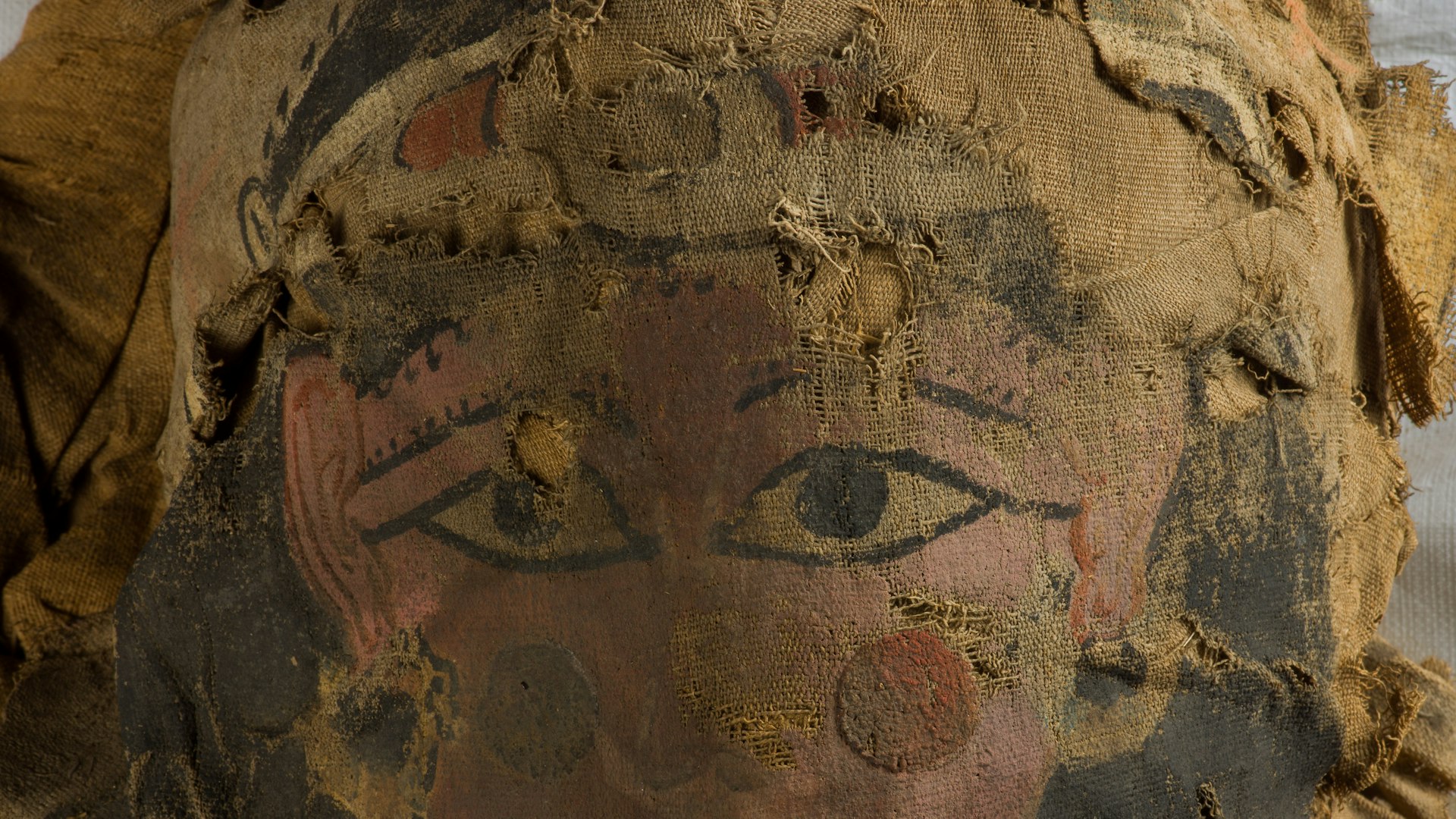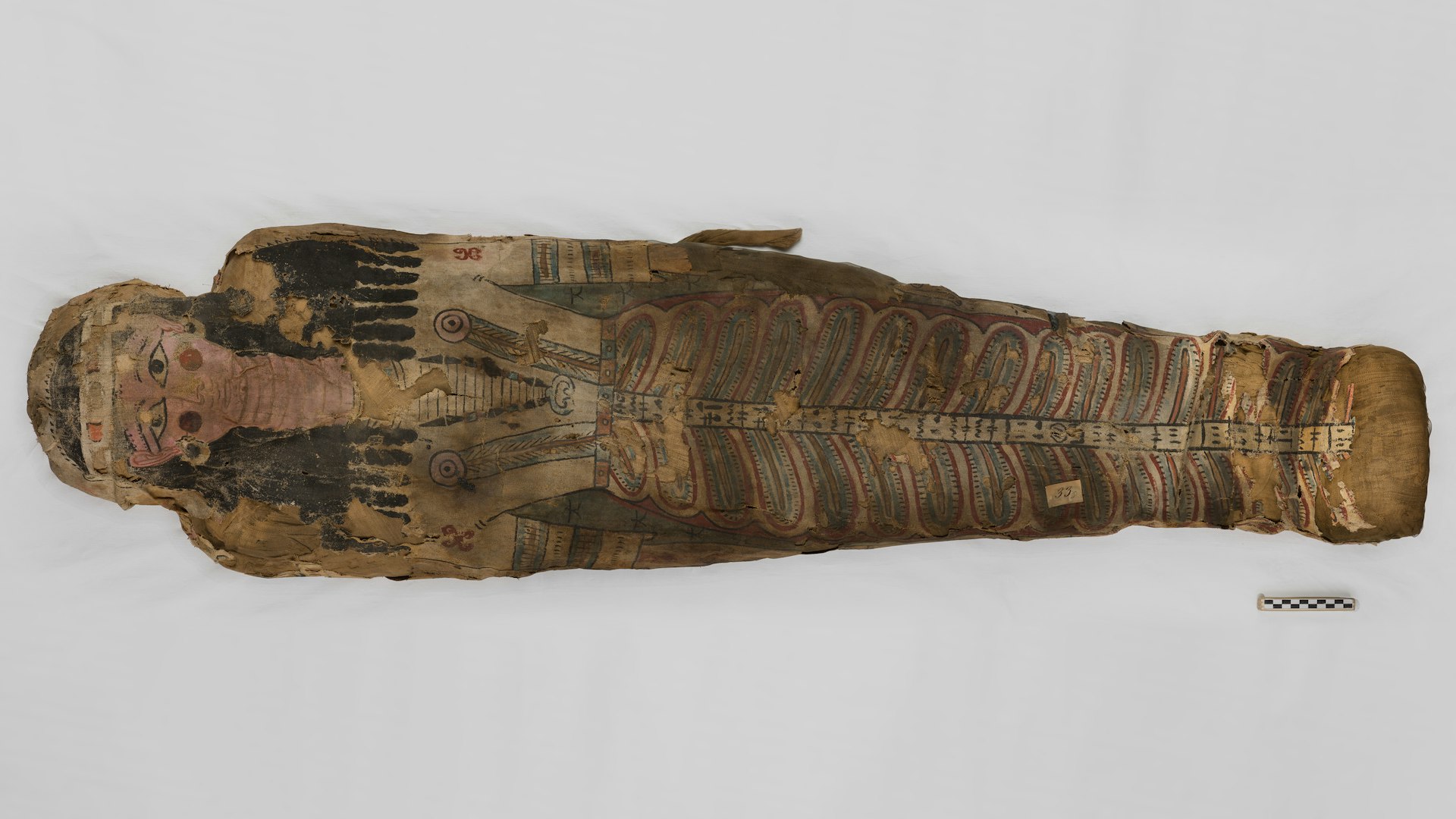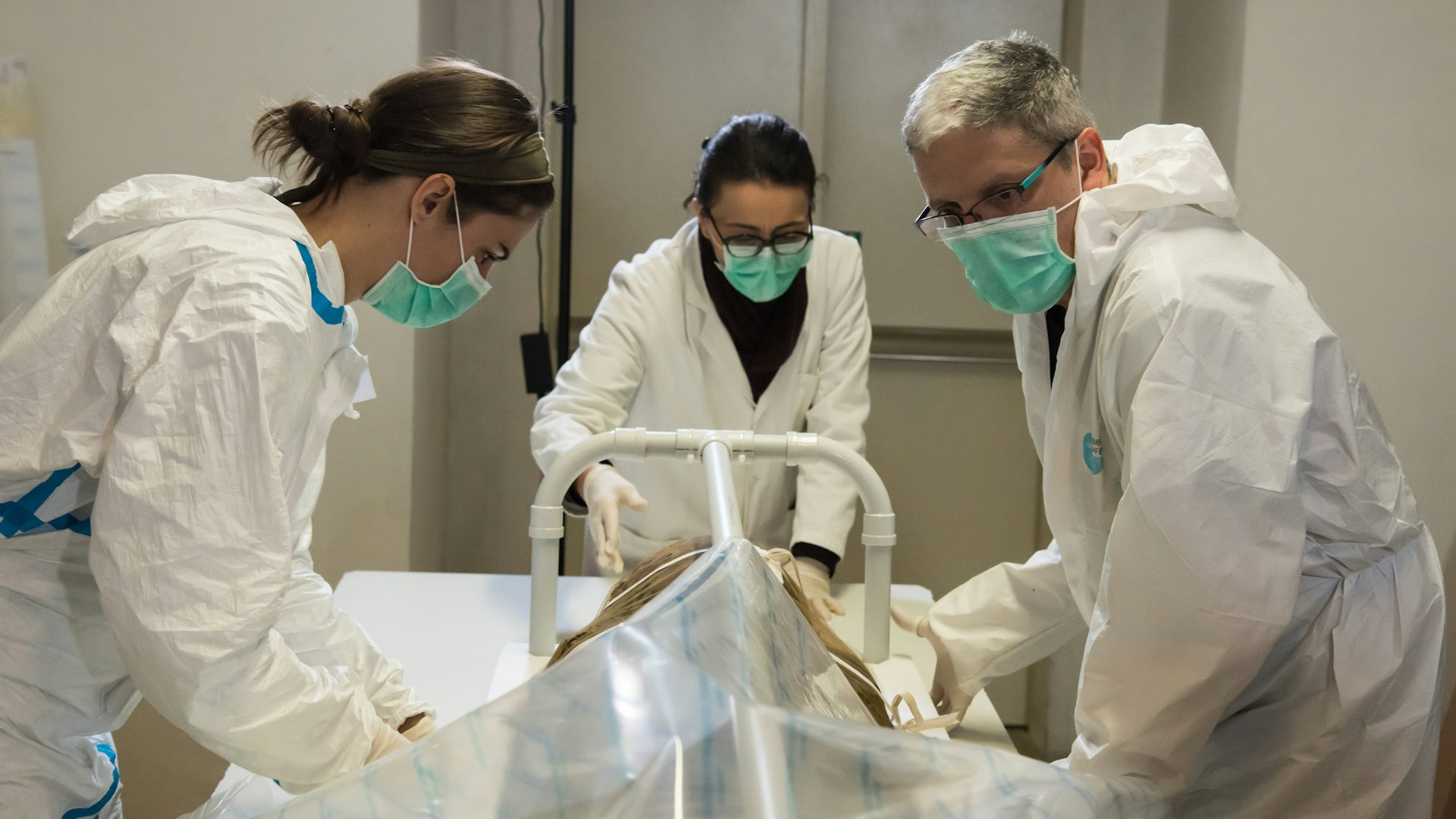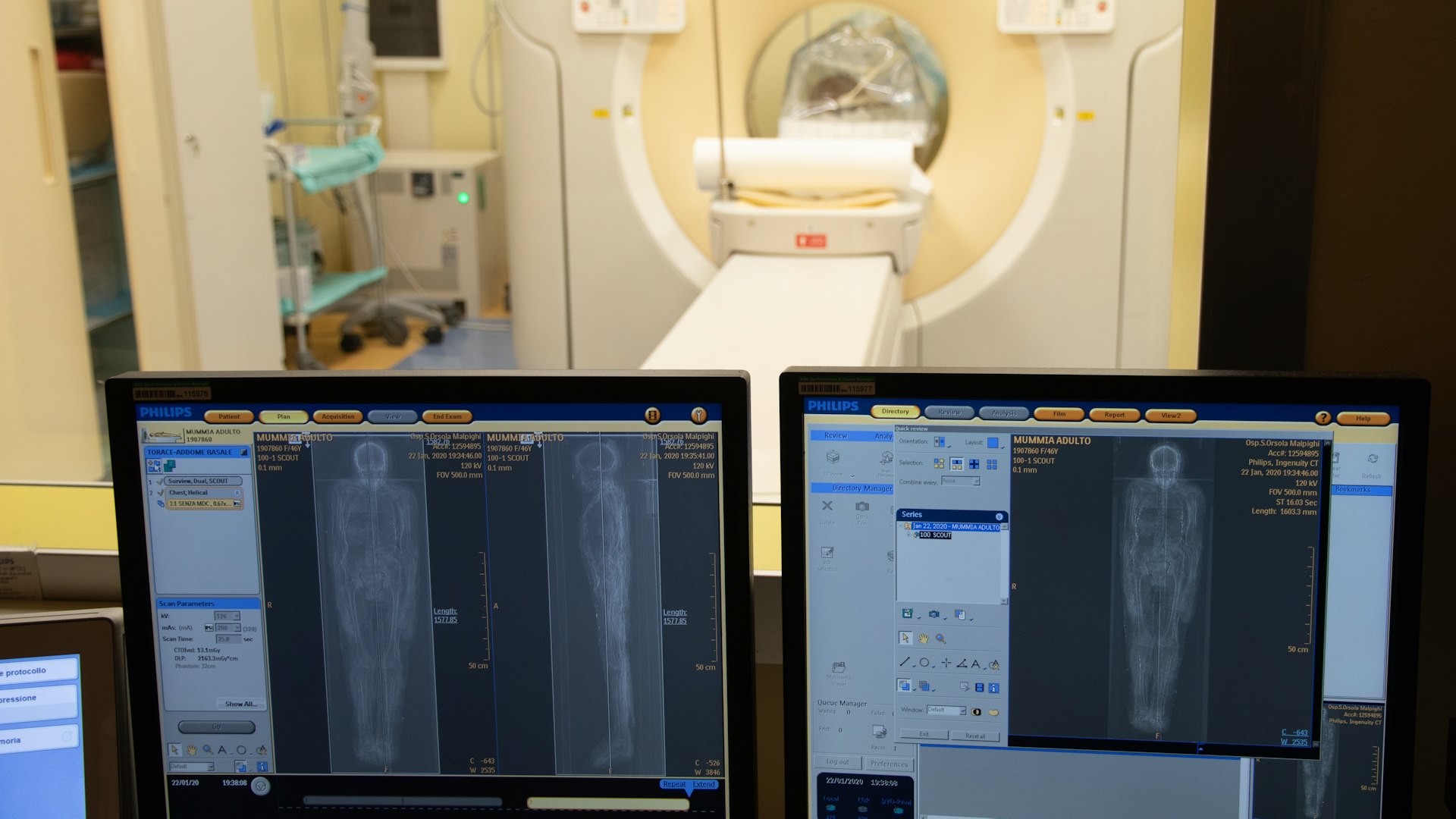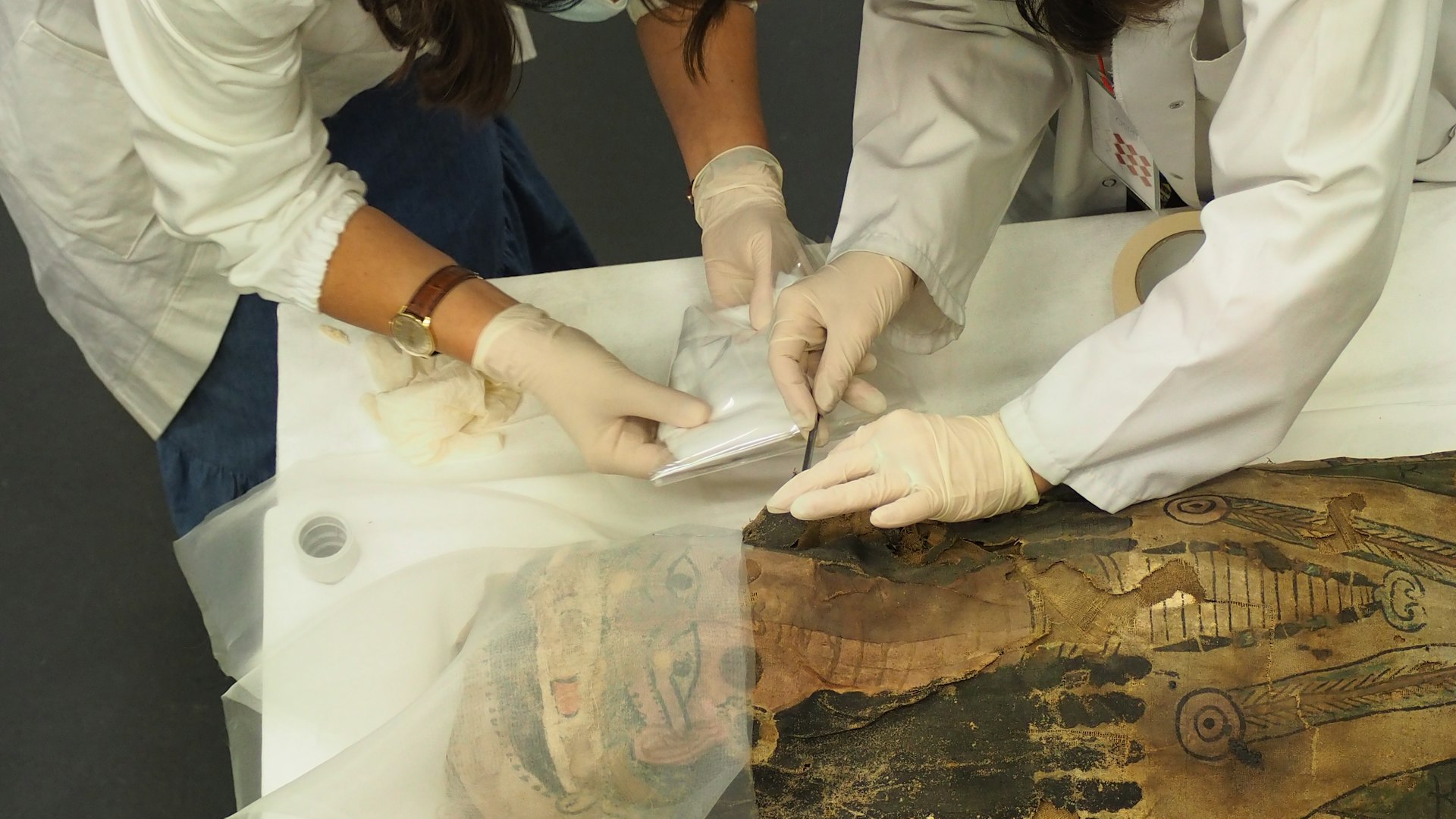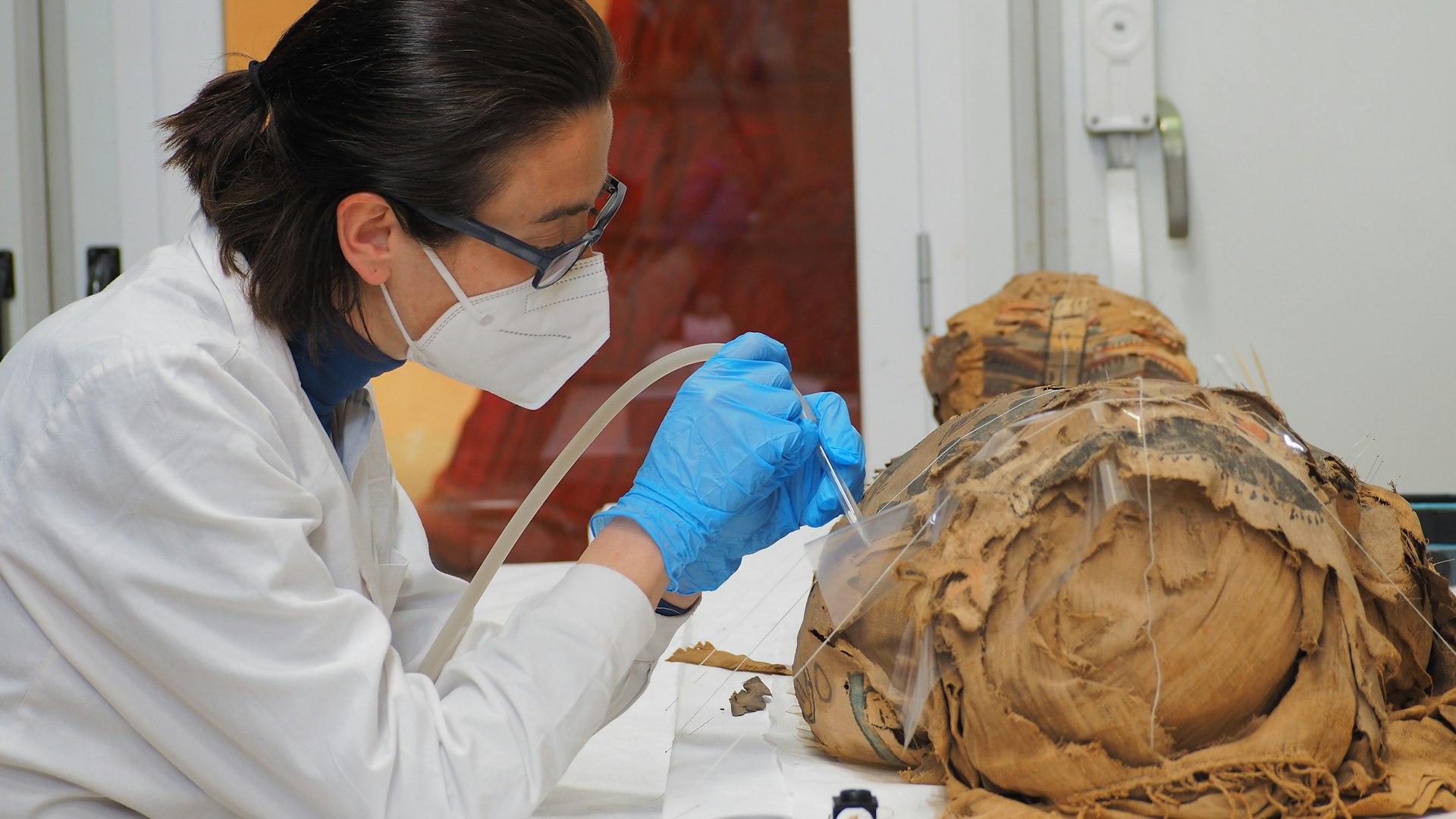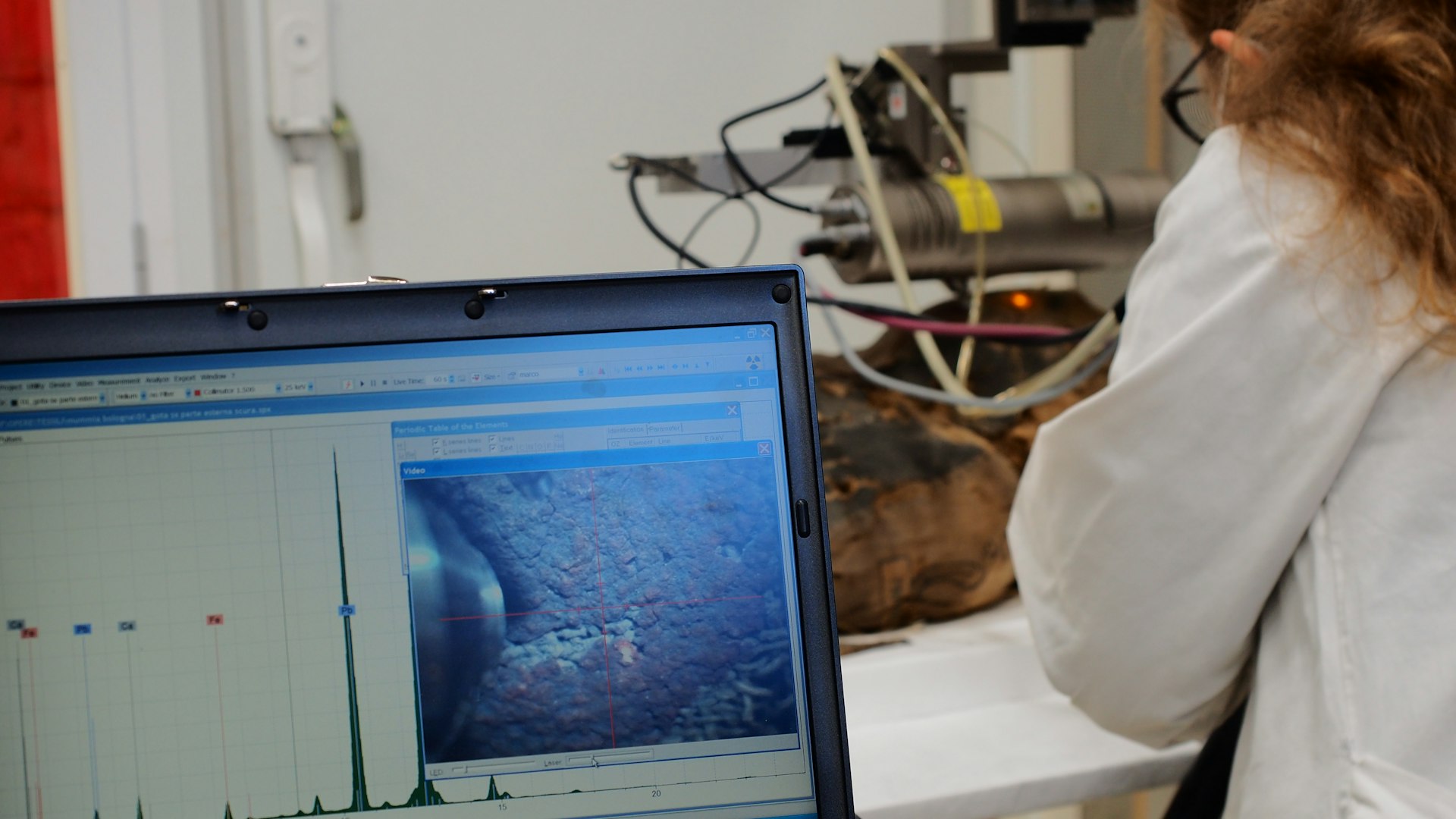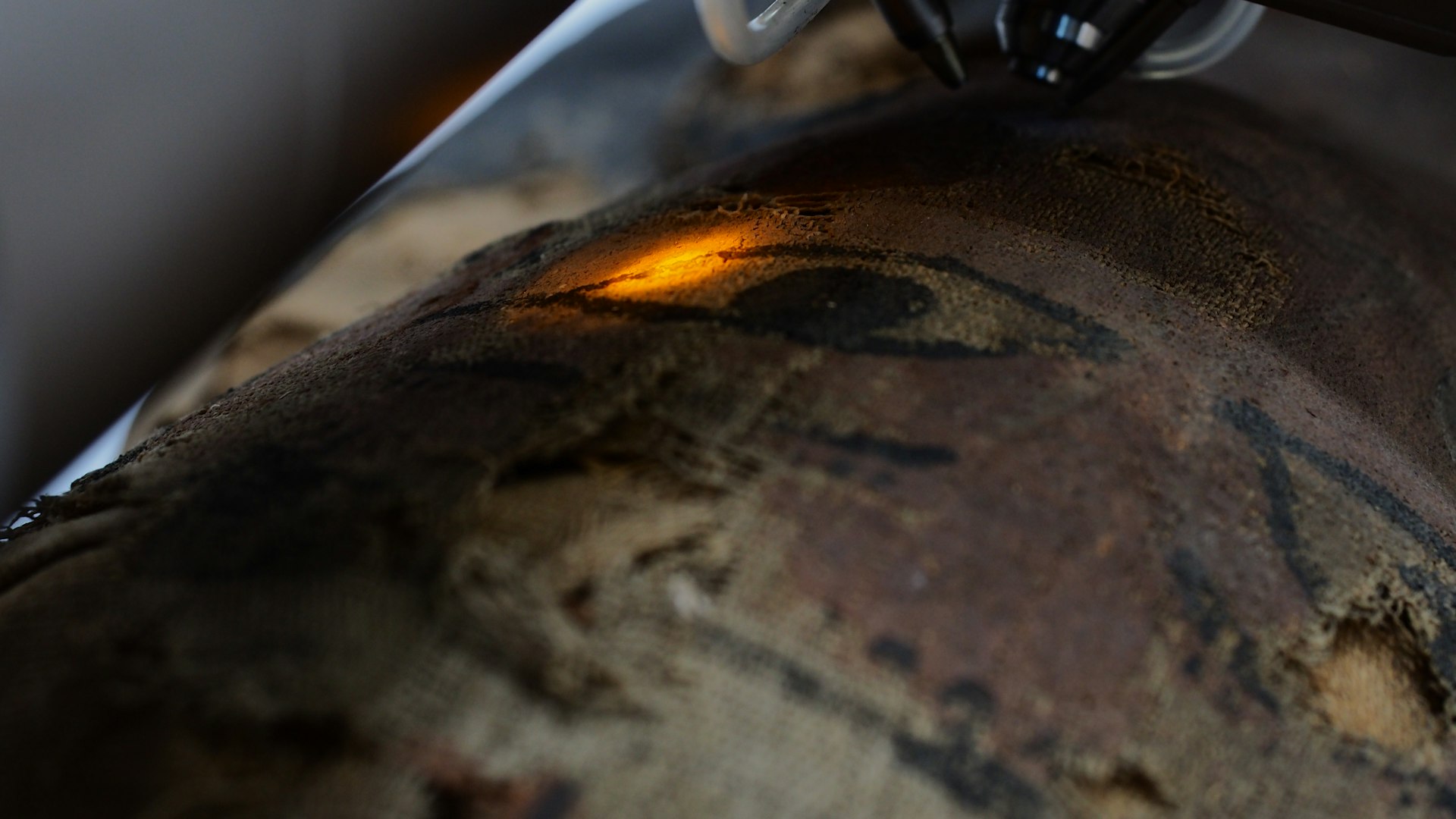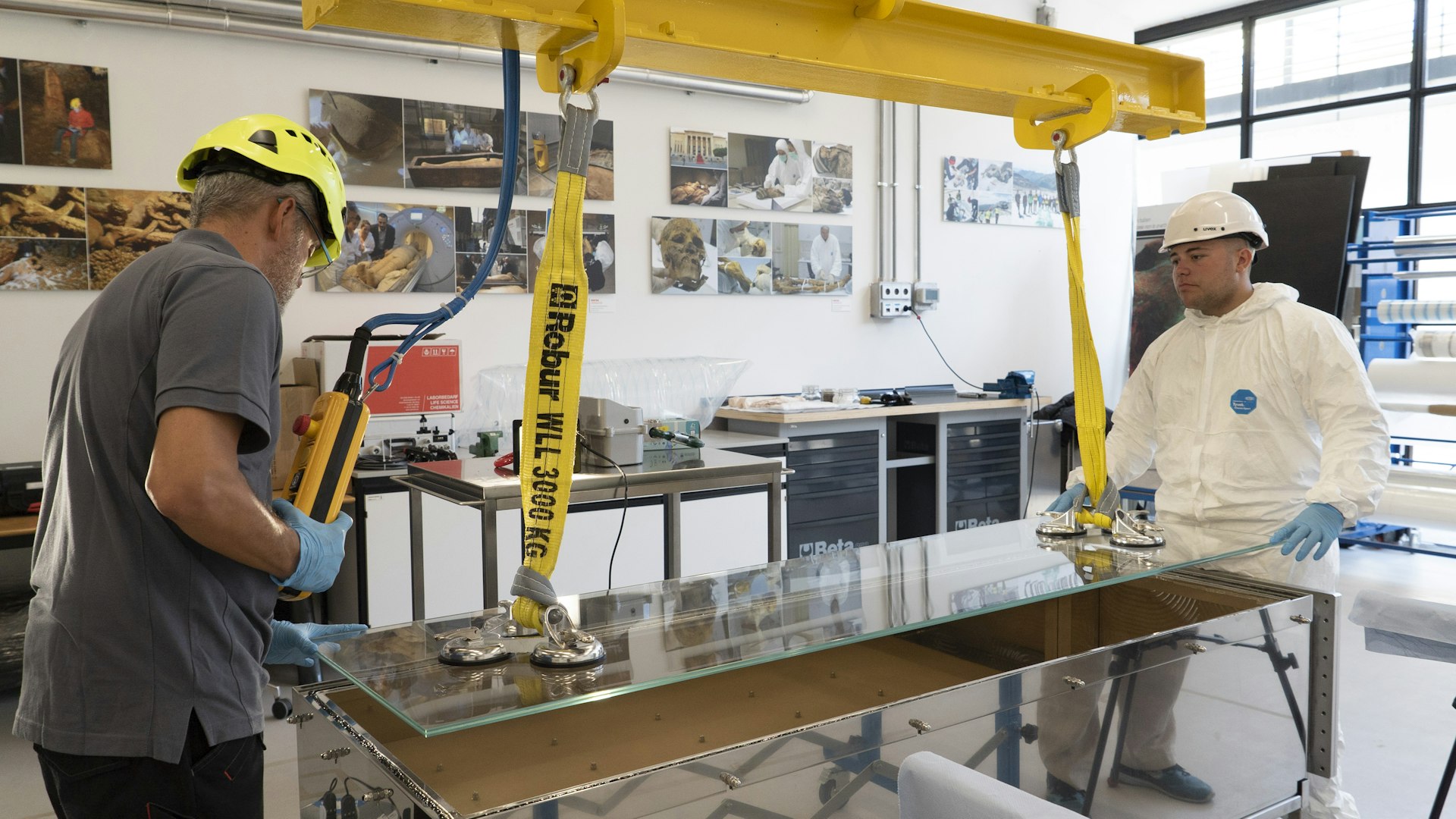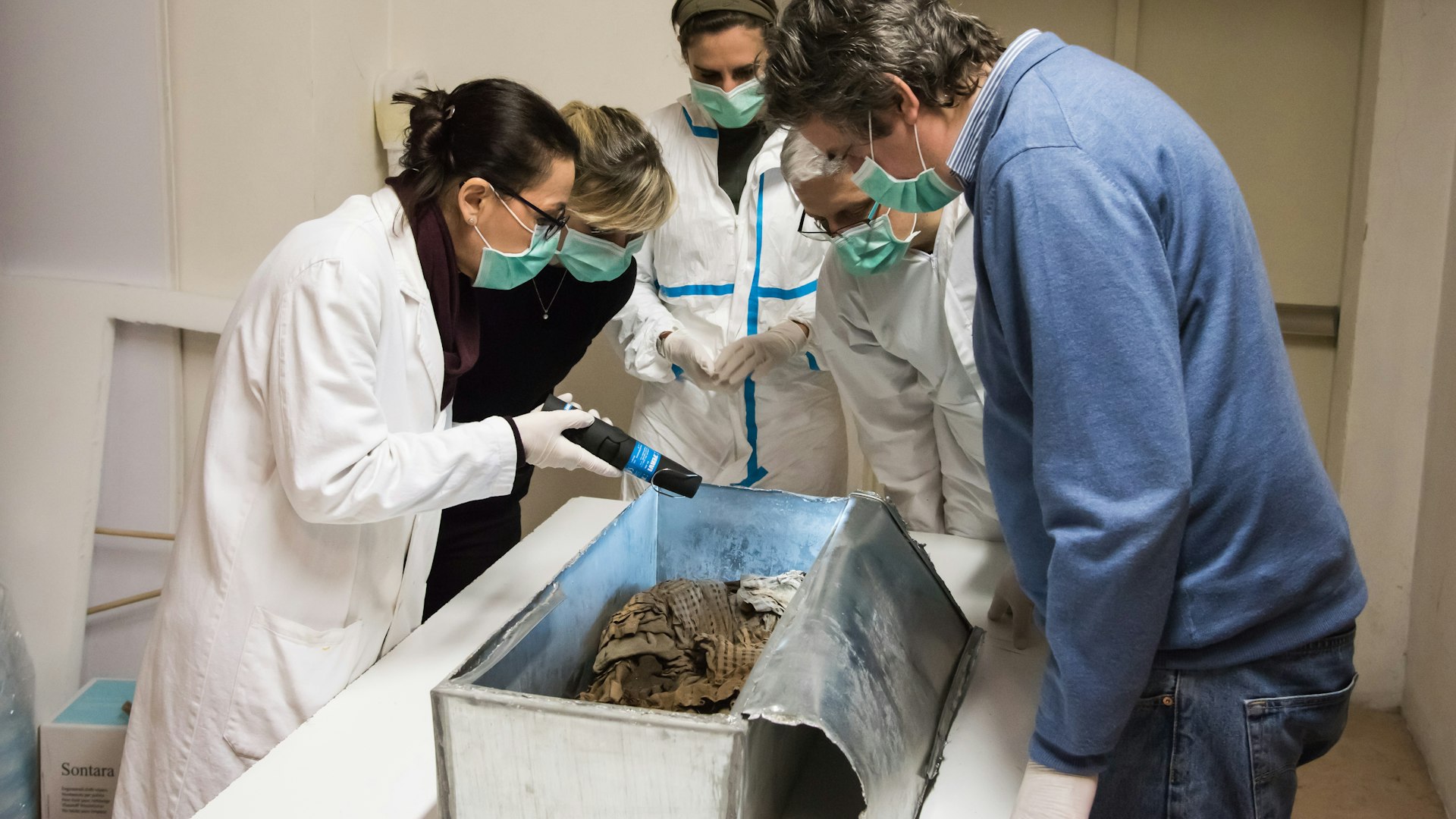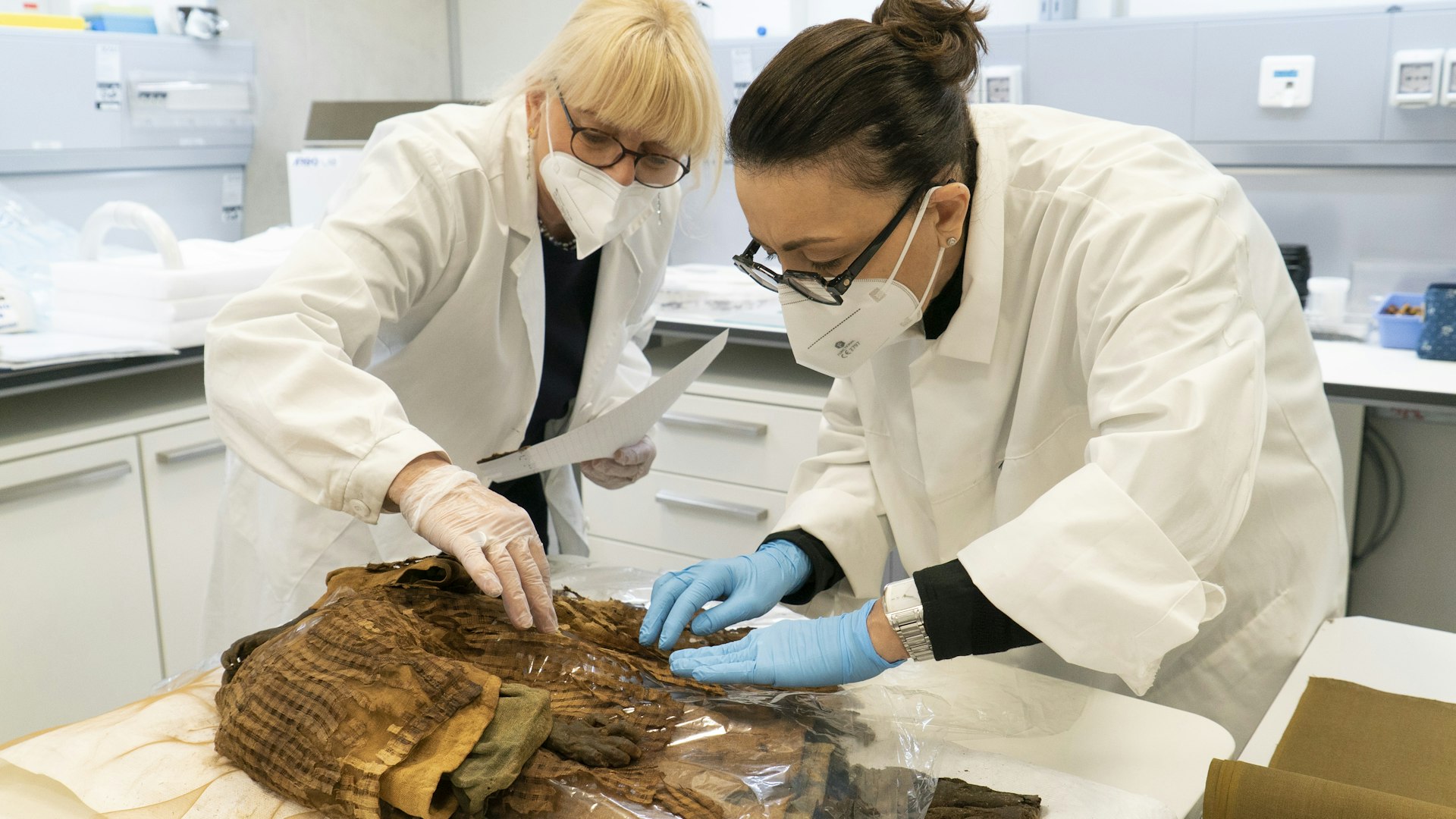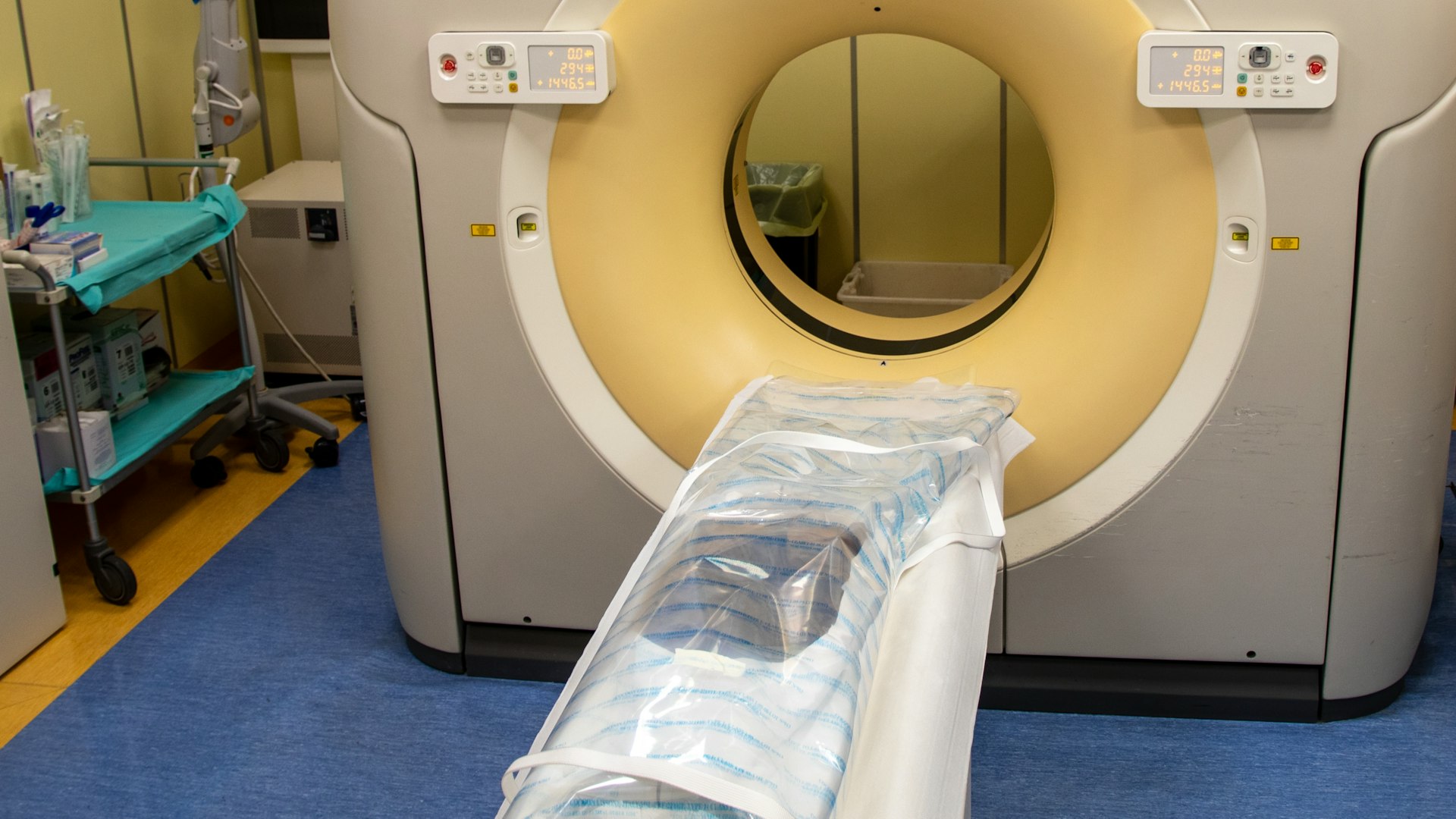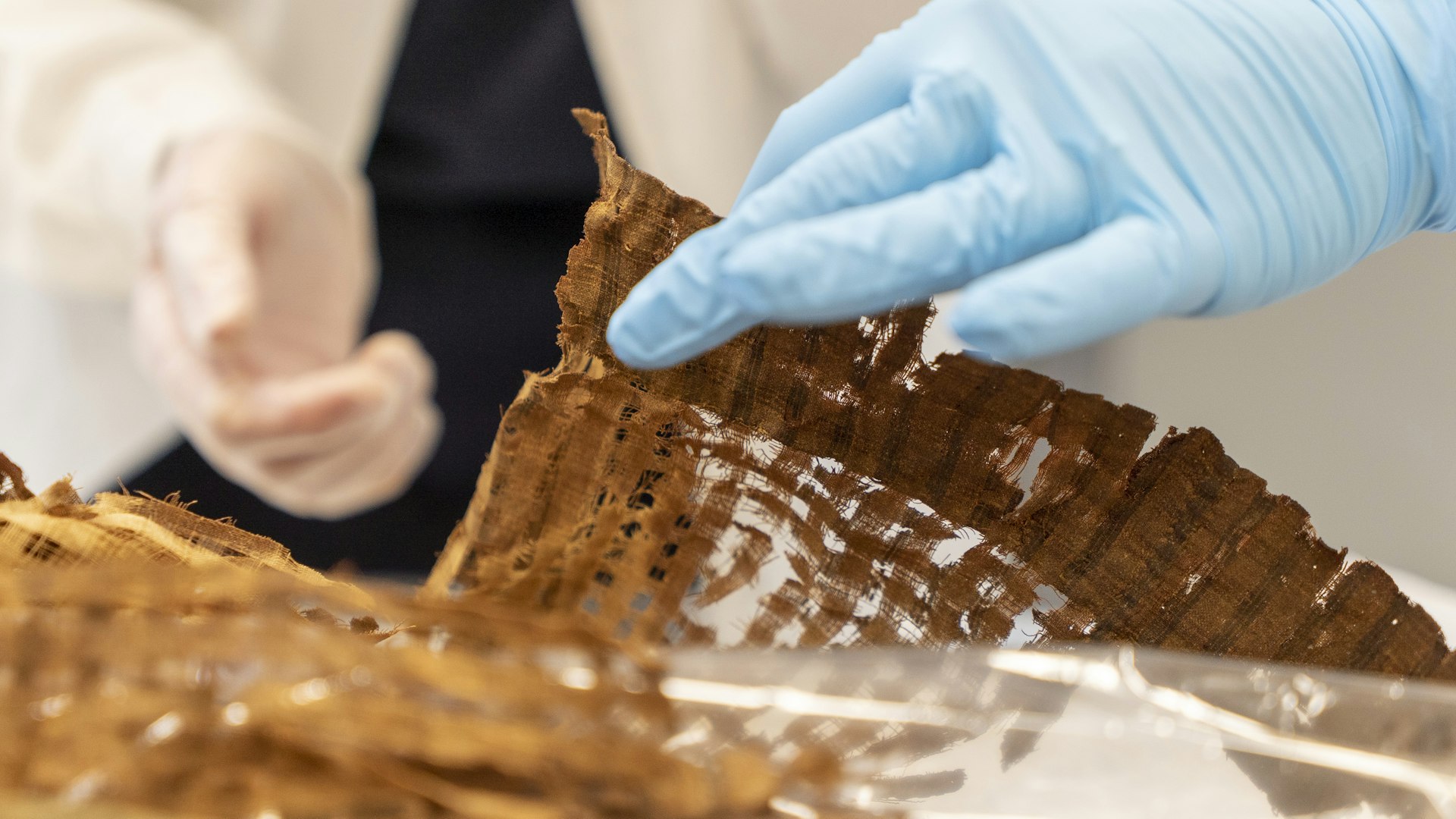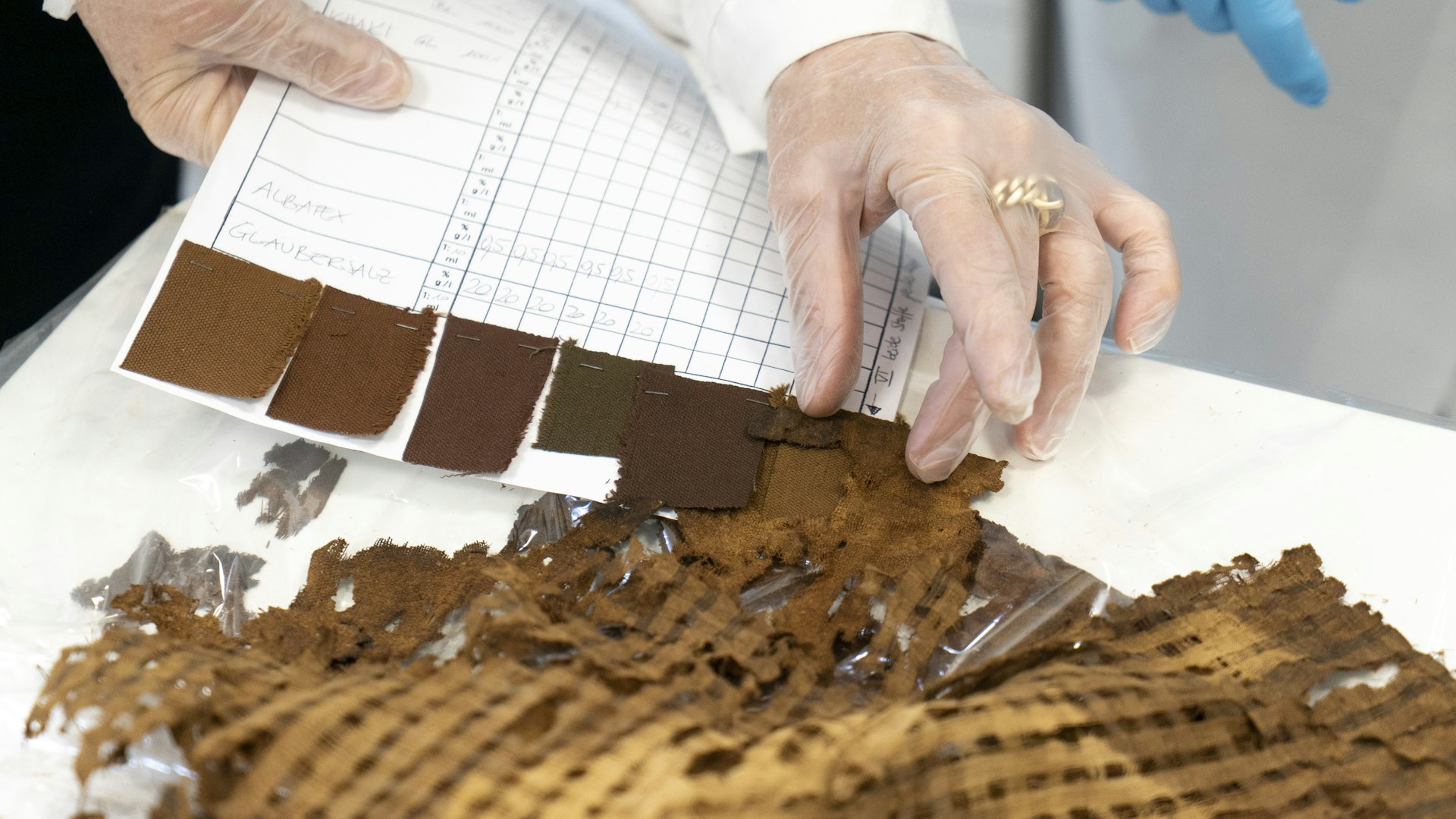PHOTOSTORYUnwrapping the stories of two Egyptian mummies
The photographic history of their recovery, study and conservation treatment
The mummy with the painted shroud belonged to a woman who lived in Roman-era Egypt. She was about 153 centimeters tall and may have been 35-45 years old at the time of her death. The extraordinary painted shroud with which she was prepared for burial still envelops the body and comprises six colors - a highly unique feature. The mummy is part of the Egyptian collection of Bologna's Archaeological Museum.
After opening the crate in which the mummy with the painted shroud was stored in the museum's warehouse, the mummy was placed in a Conservation Soft Box, developed in the laboratories of Eurac Research. The specially designed container creates an insulated environment around the mummy that protects it from moisture damage and microbiological contamination. The mummy was transported to the hospital for CT scans in the CSB. Scans were carried out thanks to the support of the Azienda Ospedaliero-Universitaria di Bologna.
CT scans made it possible to virtually unwrap the mummy in order to discover cause of death, the diseases she suffered from and the embalming techniques used to prepare her for burial. During her lifetime, the woman experienced some abscesses and other degenerative diseases, such as arthrosis of the spine and knee joints. During the embalming process, the brain was almost completely removed through the left nostril. And the internal organs were extracted through a vertical incision in the abdomen, which was then only partially stuffed with resin-soaked bandages. The body was finally covered with an abundant cast of resin and covered with a linen bandage.
The conservation treatment carried out in the laboratories of the Conservation and Restoration Centre La Venaria Reale, near Turin, required a combination of different methods and was planned in detail to structurally reinforce the shroud, recover the pictorial surface, and, at the same time, rearrange and consolidate the internal wrappings, so as to ensure preservation over time.
The mummy had a substantial layer of surface deposit that was removed by microsuction. The tip of the aspirator was protected with a fine-mesh net to avoid interference with any original shroud material.
At Venaria, the mummy was also observed microscopically. A campaign of non-invasive multispectral diagnostic investigations made it possible to map the original materials present, verify the presence of a preparatory drawing and to examine the pictorial palette.
A colour study was also conducted, which confirmed the presence of substances documented in Roman times. The pictorial style of the shroud can also be traced back to the same historical period (1st-2nd century AD), as evidenced by its similarity to the mummies and sarcophagi belonging to members of the Soter family (53-117 AD), whose tomb was found in the Theban necropolis of El Khokha (TT32).
To house the mummy, a glass and steel display case was constructed based on a passive method patented by Eurac Research whereby the interior environment is rendered oxygen-free and the storage parameters defined according to the chemical and physical conditions of the mummy. The case not only ensures these conditions remain unchanged but also requires no power supply.
The mummy of a child with three tunics is a rare testimony of funerary practice in medieval Egypt. Unlike the mummies of the Pharaonic period, the body was not subjected to embalming techniques but was prepared for burial with a rich dressing. Until recently, the mummy had been kept in the storerooms of the Museo Civico Archeologico di Bologna in a wood and metal case,.
What attracted the interest of the collector who donated this mummy to the museum was most probably the rich clothing with which the body was prepared for burial: two coarse thread linen tunics, one dyed in indigo and the other embroidered in black thread on the sleeves, and a fine thread linen over tunic with a checked pattern in neutral and black colors.
The CT scan on the mummy, conducted in cooperation with the Azienda Ospedaliero-Universitaria di Bologna, showed that the body had not been eviscerated of its internal organs. The heart, trachea, bronchi and diaphragm were naturally mummified. Examination of the skin, with its reddish-brown colouring, suggests that the body had been treated with a specific substance to prepare it for burial.
Sampling for radiocarbon dating was conducted in the Institute for Mummy Studies laboratories at Eurac Research. These investigations allowed the mummy to be dated to the 13th century AD.
The conservation treatment was performed by South Tyrolean antique textile expert Irene Tomedi. The precarious state of the body required her to work directly on the mummy, without removing the tunics.
The fabrics were very degraded, torn and brittle. Today they are more solid and have a homogenous appearance thanks to her expertise.
The cleaning treatment made it possible to eliminate creases in the fabric and understand the formal characteristics of the robes. The three tunics were supplemented and consolidated with linen and silk support fabrics, dyed in appropriate colors.
Unwrapping the stories of two Egyptian mummies
The photographic history of their recovery, study and conservation treatment
For more than a year, a team of anthropology, Egyptology, diagnostics, restoration and conservation experts have been working closely together to return two unique Egyptian mummies, witnesses to a history thousands of years old to the public and the scientific community. A new exhibition now showcases these unique findings -the mummy with the painted shroud and the mummy of a child with three tunics.
The two mummies are part of the Egyptian collection of Bologna's Archaeological Museum. Thanks to a collaboration between Eurac Research and the museum, they have now been studied in depth and entrusted to the hands of skilled restorers. They are now on display in a temporary exhibition at NOI Techpark in Bolzano.
The exhibition
Mummies. Unwrapping the past
02.09. - 08.10.2022
NOI Techpark - via Volta 13a – Bolzano
Lu-Ve 8.00 – 21.30
Sa 9.00 – 20.00
Admission is free
All information about the exhibition and guided tours is available at https://www.eurac.edu/en/exhibition/mummies-unwrapping-the-past
